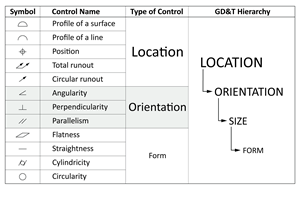Working High End
The right CAD/CAM provides a common language that unites all processes, ensuring that everything moves fluently through the toolroom and across each discipline.
Injection moldmaker Alpha Precision is high end all the way, according to Director Brendan Feely. To Feely that means, high end staff building high end molds with high end software, such VISI from Vero Software.
To illustrate how VISI ties the complete toolmaking environment together, Feely likens his toolroom to a football team via a recent case history submission. “We need our goalkeeper, defenders, midfielders and strikers. We have a variety of different machines doing different jobs, so our operators have different skills. The software’s applied on the back of the machining, and because there are several disciplines, such as design, milling, wire and spark eroding, the software fits naturally into its given area. The operator in that area is just trained on the one particular VISI module.”
Continuing the “team” analogy, Feely notes that the toolroom is like a group of people from different countries with none of them speaking a language other than their own. “One language is design, with others including flow analysis, milling, wire eroding, spark erosion. VISI is the common language that unites all processes, ensuring everything moves fluently through the toolroom from one discipline to another.
Alpha makes a lot of one-off custom components for each mold, meaning they only run a program once, which means they need to be very good at generating CNC code time after time. VISI helps them do just that.
Operating with 12 employees, the company produces an average of 40 tools a year for the automotive, medical, packaging and electronics industries. Two of Alpha’s current projects, including a high cavitation tool for a medical customer and a two-shot overmolded plastic injection mold, are kept simple and efficient using VISI.
For example, the medical industry requires very fine micro levels, which VISI can handle with ease on Alpha’s high-speed Röder, and Makino F3 and F5 machining centers. “We use high-end 42,000-rpm spindle speed for very small detail finishing, and cut our electrodes on the Makino F3, with high definition being done on the F5. And we can also machine a cavity in just one night, that would otherwise take a week,” Feely says. Using VISI Machining they can quickly produce a highly polished medical part with fine detail, a milled finish, and a split line within micron accuracy.
VISI also powers Alpha’s Mitsubishi wire and Charmilles sinker EDMs, which both cut parts of the mold. The end result is a very fine-micron, accurately-controlled finished medical or automotive mold. Other VISI modules include modelling, analysis, flow, mold and progress.
The software is used at every stage of the process, beginning with quoting. They also use VISI’s analytical tools to check the drafts and features that must be built into the mold, such as the core and side pieces.
“When the order’s been placed, we work closely with our customer’s on design, including flow analysis and tool layout. Once the 2D design is broken down and we have the tooling in full 3D, we really begin to see the huge power of VISI, as it controls everything from design, through milling to wiring in one environment. Because we’re not going across translators there’s a perfect understanding within the technology, taking it right through every stage.”
Using VISI Machining they can quickly produce a highly polished medical part with fine detail, a milled finish, and a split line within micron accuracy.
Alpha makes a lot of one-off custom components for each mold, meaning they only run a program once, which means they need to be very good at generating CNC code time after time. VISI helps them do just that. Combining VISI’s Compass technology with its 2D and 3D milling capability, all milling for hard prepping and high-speed finishing is handled quickly and accurately, according to Feely.
Related Content
What is Scientific Maintenance? Part 2
Part two of this three-part series explains specific data that toolrooms must collect, analyze and use to truly advance to a scientific maintenance culture where you can measure real data and drive decisions.
Read MoreTolerancing in Mold Design, Part 2: Using GD&T to Address Conventional Tolerancing Issues
Mold designers can achieve a single interpretation of workpiece functionality when following the American Society of Mechanical Engineers Geometric Dimensioning and Tolerancing standard.
Read MoreHow to Improve Your Current Efficiency Rate
An alternative approach to taking on more EDM-intensive work when technology and personnel investment is not an option.
Read MoreWhat Is Scientific Maintenance? Part 1
Part one of this three-part series explains how to create a scientific maintenance plan based on a toolroom’s current data collection and usage.
Read MoreRead Next
How to Use Continuing Education to Remain Competitive in Moldmaking
Continued training helps moldmakers make tooling decisions and properly use the latest cutting tool to efficiently machine high-quality molds.
Read MoreHow to Use Strategic Planning Tools, Data to Manage the Human Side of Business
Q&A with Marion Wells, MMT EAB member and founder of Human Asset Management.
Read MoreReasons to Use Fiber Lasers for Mold Cleaning
Fiber lasers offer a simplicity, speed, control and portability, minimizing mold cleaning risks.
Read More






















